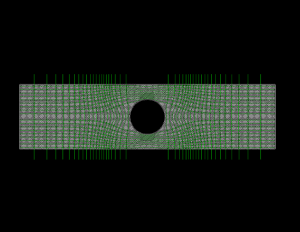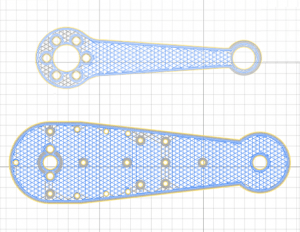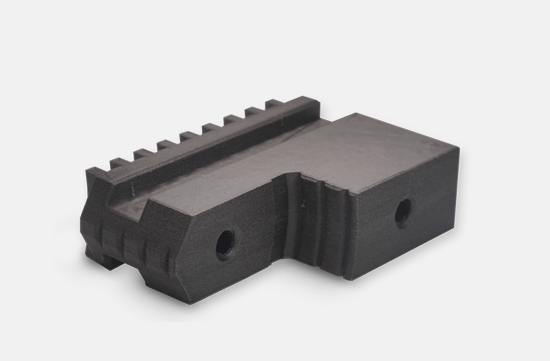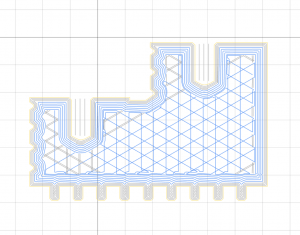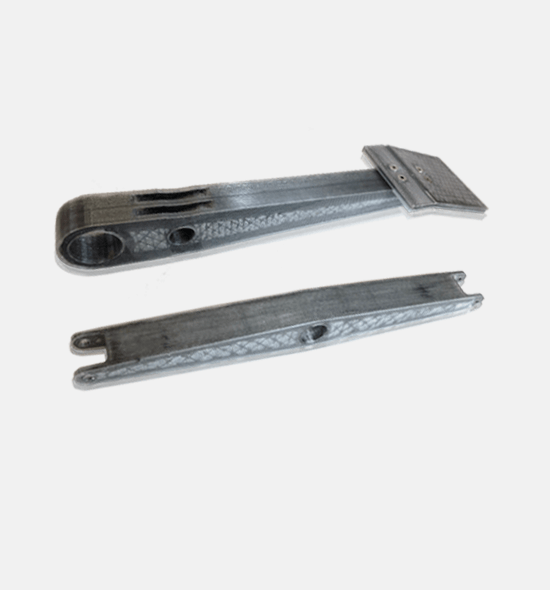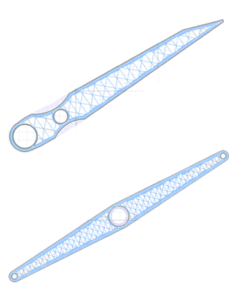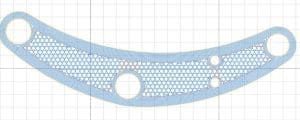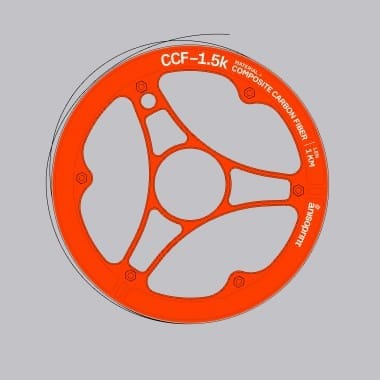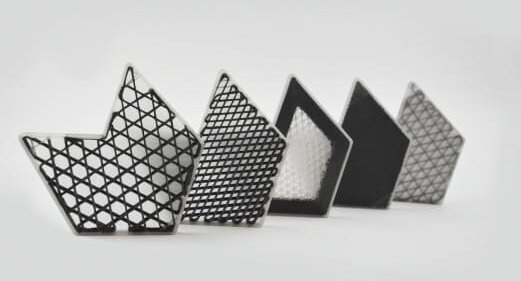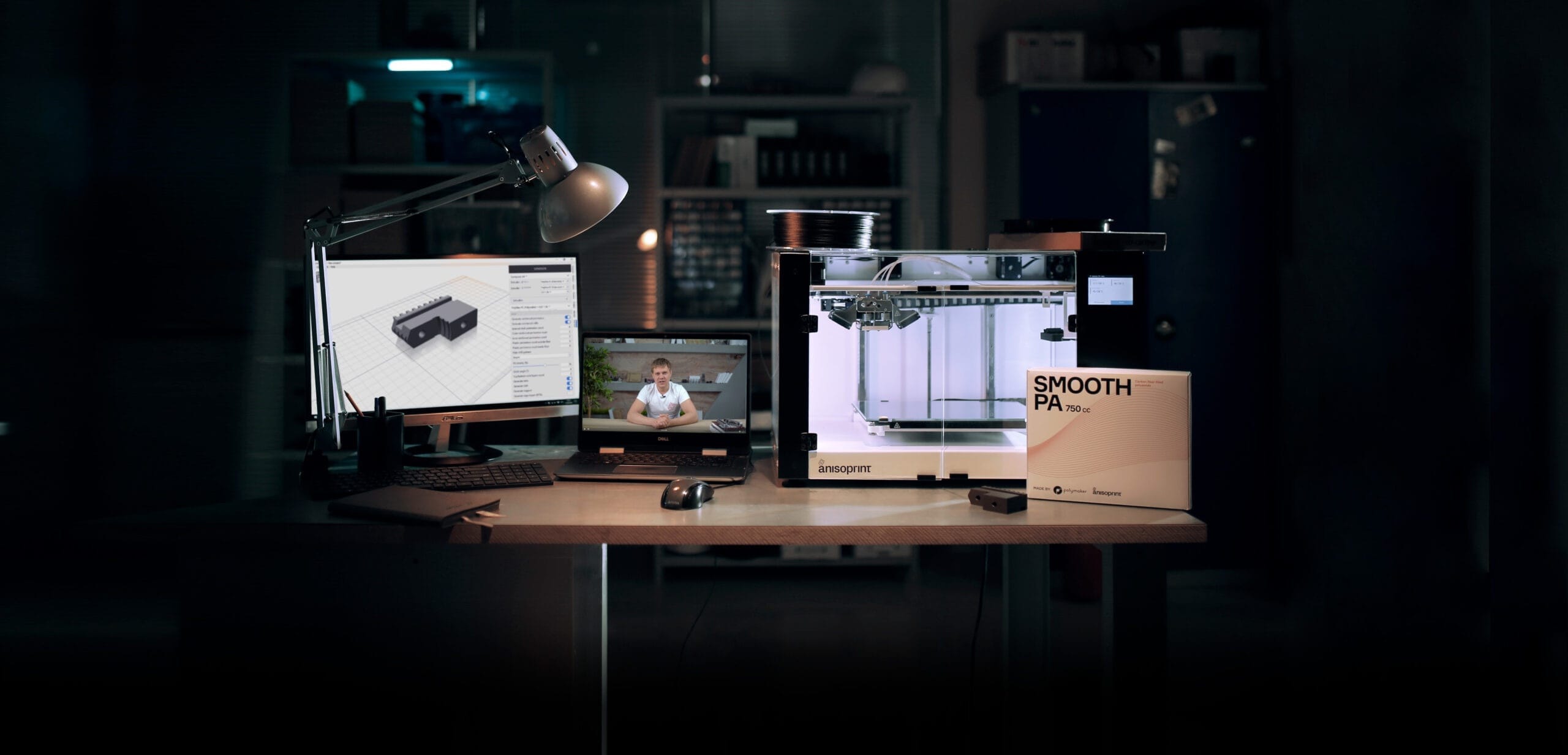
Desktop Anisoprinting
Turnkey continuous fiber 3d printing solution for manufacturing of optimal composites
Get a quote ↗
Hardware
continuous fiber reinforced composites
x30
stronger than pure plastic
x2
stronger & lighter than aluminum
available formats
A4
297х210х140mm
A3
460х297х210mm
build volume
optimal composite structures
Lattice reinforcement — minimum weight, price and production time for the required strength
open system
- Flexible materials choice
- Fiber volume ratio
- Parts complexity and fiber laying trajectories
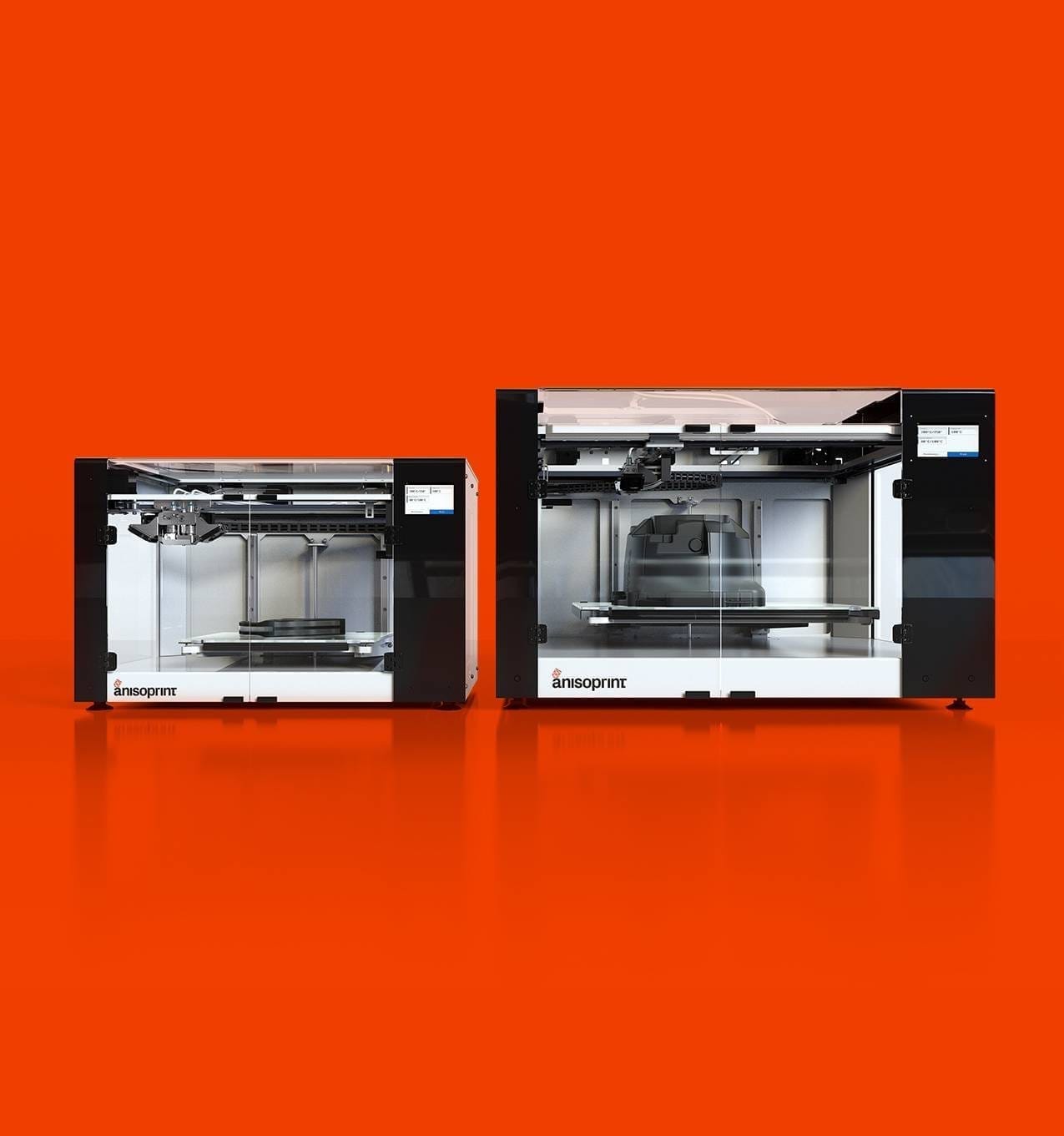
materials
For perfect adhesion to the reinforcing fiber
For reinforcing
CFC PA
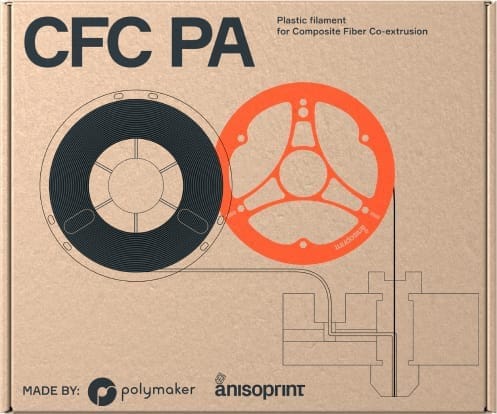
combinate with materials
Smooth PA
Plastic specially formulated by Polymaker for the perfect surface quality and ease of use.
Can be printed without a dryer.
Can be printed without a dryer.
Composite Fiber
Co-extrusion technology
Co-extrusion technology
software 3D slicer Aura
- For FFF and CFC printers
- Support for STL and CAD formats: .stp, .3ds, .obj
- Model saved on a local PC
- G-code generalization, geometry-view
- Separate setting and combining of printers, plastics and profiles
- Layer masks
the aura has a set of built-in printing profiles
Verified printing settings for certain plastic filaments: just pick from database and print

Cases
Looking for more information about Desktop Anisoprinting? Please fill in the form below:





